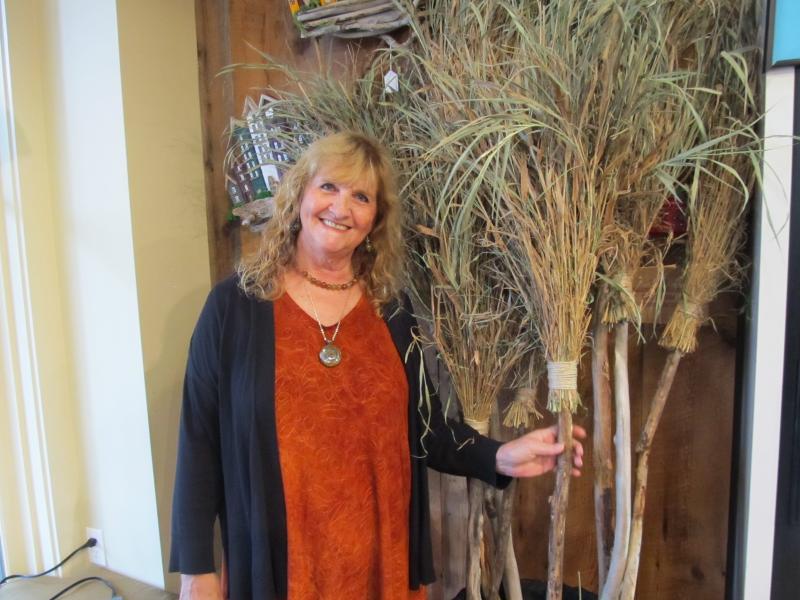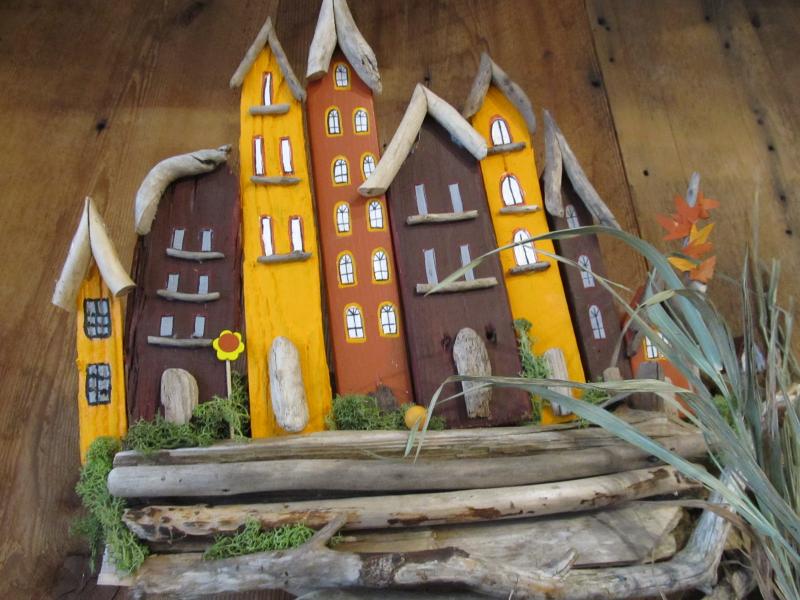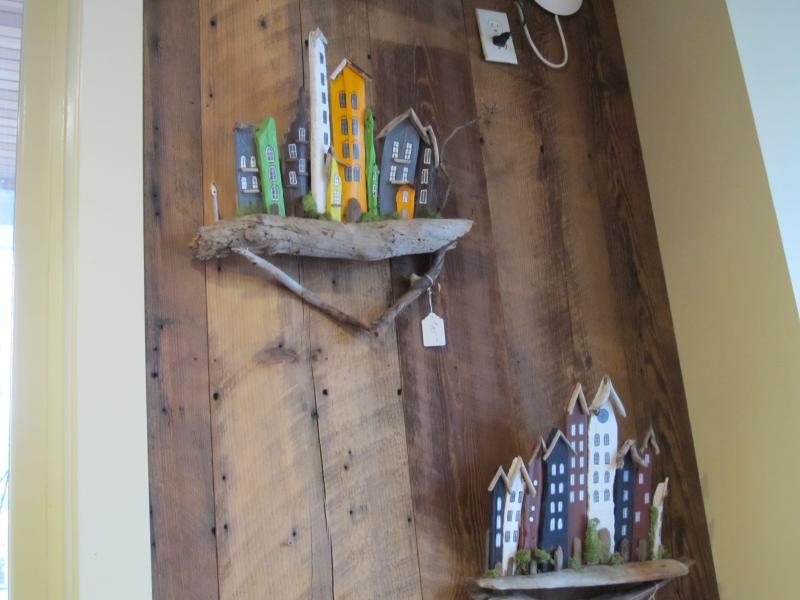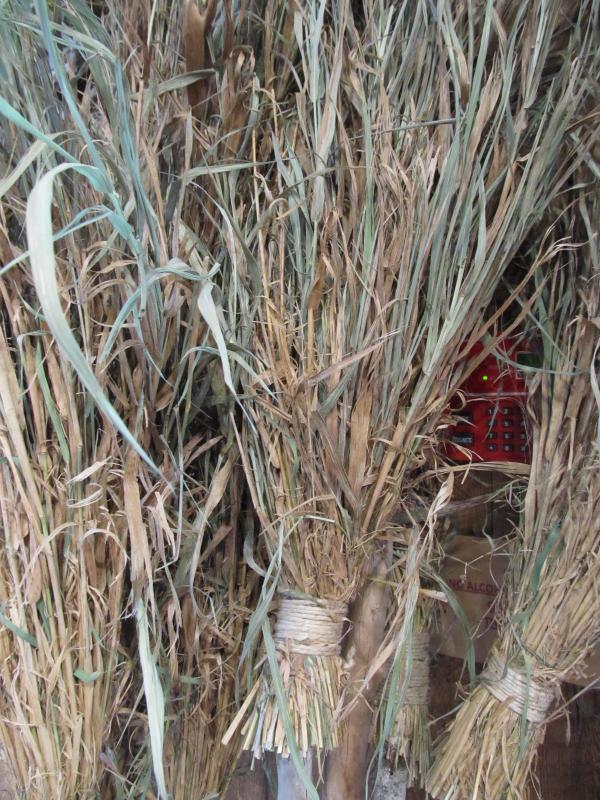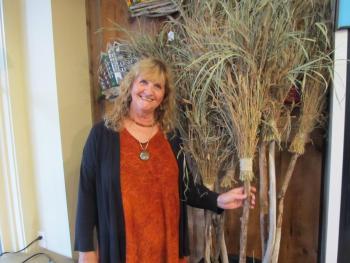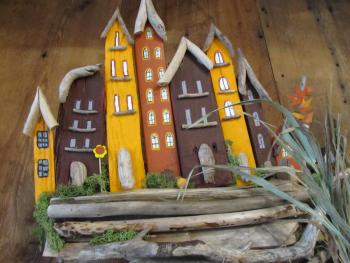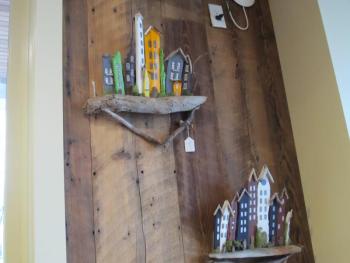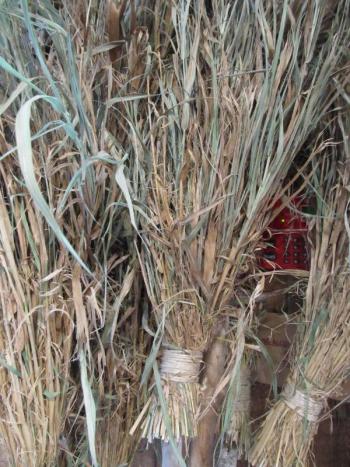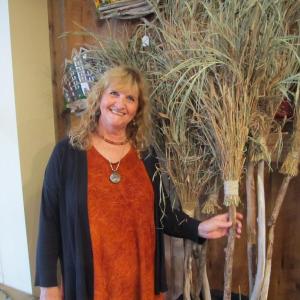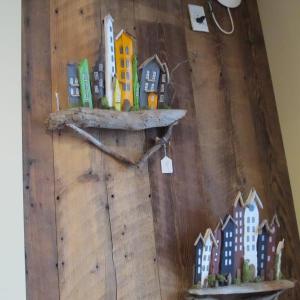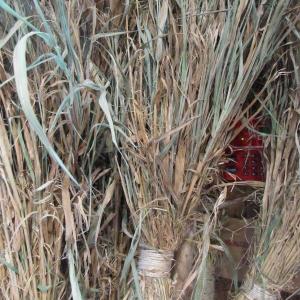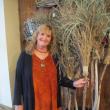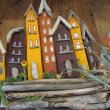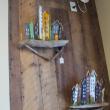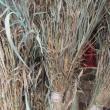Lincolnville artist makes witchy broomsticks inspired by Nature
LINCOLNVILLE CENTER—‘Tis the season of the witch and Joni Dyer, from Lincolnville, is having fun with its most recognizable symbol—the broomstick.
Back before there were Hoovers and Roombas, the only way a person could clean the house was to use thin sticks, reeds, and other fibers to sweep the dust from the floor and ash from the fireplace. Typically, it was a woman who did this chore. According to History.com, the word “broom” was originally called “besom” in the Early Modern English Period, then later modified to “broom,” which literally meant “thorny shrubs for sweeping.”
Dyer’s handmade brooms are one of a kind and are for sale at the Lincolnville Center General Store.
“I walk the beaches all summer and I find these walking sticks—they’re just so beautiful,” she said. “Then, looking at those sticks, it just came to me: I’m going to make some brooms because I love Halloween.”
Not giving away her secret materials, Dyer said she collects certain types of grasses and reeds she finds out walking, and fashions them into the thick, shaggy, brush of the broom.
“I’ve been a witch often in the past, so I’ve made my own brooms,” she said. Dyer wouldn’t say whether she meant for Halloween or year-round.
The symbolism of the broom itself has roots in pagan fertility rituals and in secretive female empowerment in earlier centuries when women were only valued for their household and domestic contributions. The shaft of the broom symbolized male fertility whereas the brush symbolized female fertility. According to The Witches’ Bible, one purpose of the broom was to “sweep the Circle clean of all evil influence.” The other purpose of the broomstick, disguised as just a simple, household cleaning tool, was to take it to the field where crops were growing and leap around upon it, or dance with it, as a way to inspire the crops to grow. As the authors Janet and Stewart Farrar of The Witches’ Bible state: “The higher, the leap, the higher the crop would grow.” The notion of leaping or “flying” with a broomstick between a woman’s legs sent the prudish society of The Middle Ages into a frenzy.
The symbols of house and hearth also intertwine in Dyer’s other handmade work, her driftwood sculptures of rows of houses, which also can be found at Lincolnville Center General Store.
“I got inspired by another sculpture I’d once seen,” she said. “And in my beachcombing walks, I found all my supplies for making these sculptures, except, of course for the paint and glue.”
A self-taught artist, Dyer integrates found items in Nature for a variety of pieces, including door stops made from rocks, and sculptures made from cooked lobster shells. “I just have fun with it; I see art in everything I find,” she said.
Her work can be found at Hilltop Hearts and Crafts on Facebook.
Kay Stephens can be reached at news@penbaypilot.com

